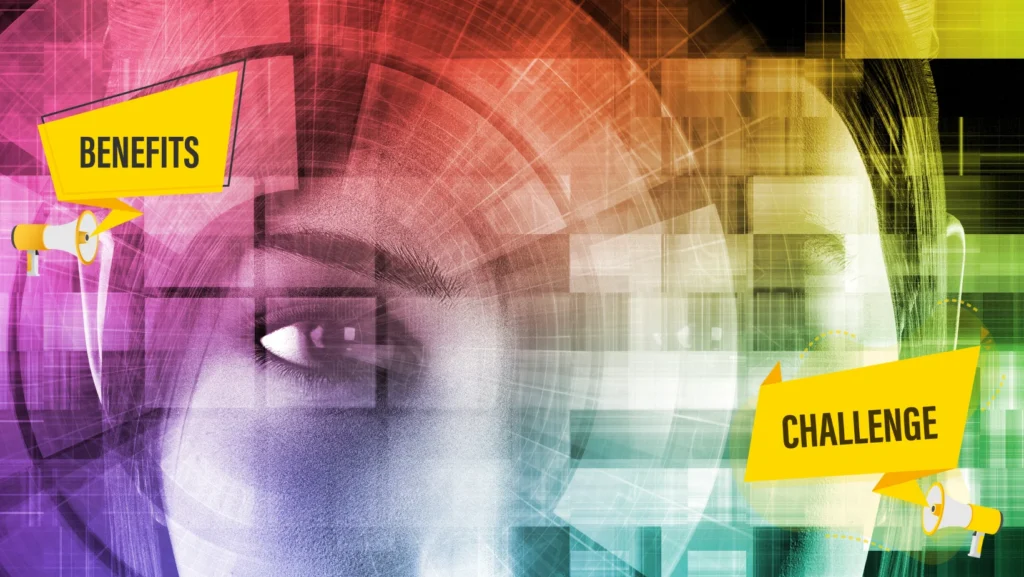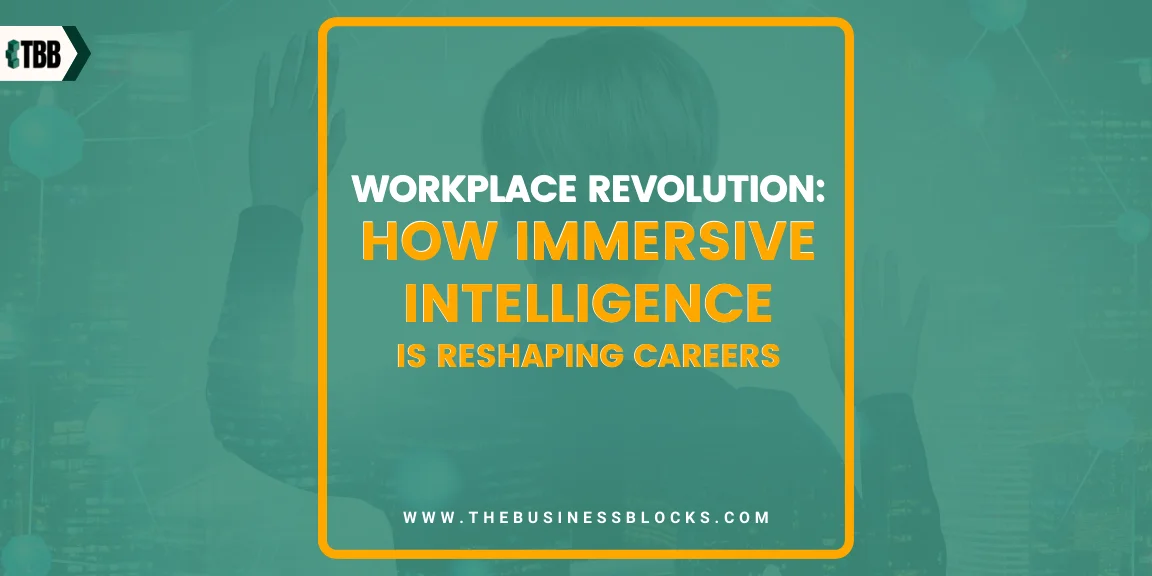Gone are the days when a workstation was confined to a physical office space. Today, we find ourselves at the forefront of a revolution, where Immersive Intelligence is not just a technological leap but a catalyst for reshaping the very essence of our professional endeavors. It’s not just about remote work; it’s about the immersive experiences, intelligent collaborations, and unprecedented opportunities that redefine the way we perceive and engage with our careers.
In this article, we will unravel the threads of this revolution, delving into the profound impact of Immersive Intelligence on various industries, job roles, and the overall landscape of work. From virtual meeting rooms that transcend geographical boundaries to augmented reality tools enhancing our daily tasks, the workplace is undergoing a metamorphosis. Join us as we navigate through the challenges and embrace the limitless possibilities that Immersive Intelligence brings to the forefront of our careers.
Did you know?
- Immersive technology became more available in 1957 when Morton Heilig invented the Sensorama cinematic experience, including speakers, fans, smell generators, and a vibrating chair to immerse the viewer in the movie.
- “As the digital realm continues to grow, immersive technologies are the next logical step for the marketplace. Look for this area to develop into something quite real in the next five years,” Nguyen says.
Ever wondered how immersive tech is reshaping the job scene?
Imagine a workplace where your daily tasks are augmented by cutting-edge technologies, where collaboration is not confined to physical spaces, and where immersive experiences redefine how you engage with your career. This unveils the exciting ways Immersive Intelligence is breaking down traditional work barriers. Think beyond the ordinary—your career is about to get a futuristic upgrade!
Discover the perks of virtual meeting spaces, smart collaborations, and career experiences like never before. Picture a workplace where innovation and technology coalesce to redefine your daily grind. Your dream career is not just a job anymore; it’s an immersive journey into the future!
Don’t miss out; Read on and learn about Immersive Intelligence today!
Understanding Immersive Intelligence

Immersive Intelligence refers to the integration of advanced technologies that create highly interactive and engaging experiences by seamlessly blending the digital and physical worlds. This concept combines artificial intelligence (AI), virtual reality (VR), augmented reality (AR), mixed reality (MR), and other emerging technologies to provide users with immersive and intelligent environments.
Here’s a breakdown of the key components:
Artificial Intelligence (AI):
AI plays a central role in Immersive Intelligence by enabling systems to learn, adapt, and make intelligent decisions. Machine learning algorithms are often used to analyze data, understand user behavior, and enhance the overall intelligence of immersive experiences.
Virtual Reality (VR):
VR creates entirely digital environments that users can interact with using specialized equipment, such as VR headsets. Immersive Intelligence leverages VR to provide realistic simulations and training scenarios, creating an immersive and impactful user experience.
Augmented Reality (AR):
AR overlays digital information onto the real-world environment, enhancing the user’s perception of the surroundings. In Immersive Intelligence, AR is often used to blend digital content with the physical world, offering applications in gaming, education, healthcare, and more.
Mixed Reality (MR):
MR combines elements of both VR and AR, allowing digital and physical objects to coexist and interact in real time. This technology is integral to Immersive Intelligence as it enables more seamless integration of virtual and real-world elements.
Immersive Experiences:
Immersive Intelligence focuses on creating experiences that go beyond traditional user interfaces. It aims to engage users on a deeper level, providing realistic simulations, interactive training scenarios, and collaborative environments that feel natural and intuitive.
Applications Across Industries:
Immersive Intelligence finds applications across various industries, including healthcare, education, gaming, manufacturing, and more. For example, in healthcare, surgeons may use immersive technologies for training, and in education, students may experience virtual field trips.
Human-Computer Interaction:
Interaction with immersive environments often involves natural and intuitive gestures, voice commands, and other forms of human-computer interaction. This enhances the overall user experience and makes the technology more accessible.
Understanding Immersive Intelligence involves recognizing its potential to reshape how we work, learn, and interact with the digital world. It opens up new possibilities for creating engaging and intelligent experiences that transcend the limitations of traditional interfaces.
The Impact of Immersive Intelligence on the Workplace and Careers

The impact of Immersive Intelligence on the workplace and careers is profound, ushering in a transformative era that redefines how we work, collaborate, and experience our professional lives.
Here are some of its impact:
Revolutionizing Collaboration:
Immersive Intelligence is breaking down geographical barriers by enabling seamless virtual collaboration. Virtual reality (VR) and augmented reality (AR) technologies facilitate immersive meetings, allowing teams from different parts of the world to collaborate as if they were in the same room. This revolutionizes the traditional workplace model, making remote work more engaging and effective.
Enhanced Training and Skill Development:
In various industries, Immersive Intelligence is revolutionizing training programs. From virtual simulations for complex medical procedures to hands-on training in manufacturing processes, immersive technologies provide a safe and realistic environment for skill development. This not only improves the quality of training but also accelerates the learning curve for employees.
Augmented Job Roles:
Immersive technologies are augmenting traditional job roles by introducing new ways of performing tasks. For instance, technicians can use augmented reality overlays to receive real-time information while working on machinery, and architects can visualize designs in 3D space. This augmentation enhances efficiency and accuracy in various professions.
Fostering Innovation and Creativity:
The immersive nature of technologies like VR and AR fosters a creative and innovative mindset in the workplace. Teams can brainstorm, prototype, and iterate in virtual environments, leading to more innovative solutions and products. Immersive Intelligence acts as a catalyst for pushing the boundaries of conventional thinking.
Flexible Work Environments:
Immersive Intelligence contributes to the rise of flexible work environments. With virtual offices and collaborative spaces accessible from anywhere, employees can tailor their work settings to maximize productivity. This flexibility is not limited by physical office constraints, enabling a more adaptive and personalized approach to work.
Data-Driven Decision-Making:
The integration of artificial intelligence in immersive technologies allows for data-driven decision-making. Intelligent analytics can provide insights into user behavior, collaboration patterns, and overall performance, empowering organizations to make informed decisions to optimize workflows and enhance productivity.
New Career Opportunities:
The evolution of Immersive Intelligence creates new career opportunities in fields such as virtual reality development, augmented reality design, and immersive experience management. As these technologies become more integral to various industries, professionals with expertise in immersive technologies will be in high demand.
Immersive Intelligence is reshaping the workplace by offering innovative solutions to longstanding challenges. Its impact goes beyond improving efficiency; it fundamentally transforms the way we perceive and engage with our careers, paving the way for a more connected, creative, and adaptable workforce. Embracing these changes is crucial for individuals and organizations looking to thrive in the future of work.
10 Examples of Immersive Technology

Immersive technology encompasses a variety of technologies that create a sense of immersion or presence in a digital or simulated environment.
Here are some examples:
1. Virtual Reality (VR):
- Oculus Rift: A VR headset that provides an immersive gaming and entertainment experience.
- HTC Vive: Known for its room-scale tracking, allowing users to move around in a physical space while interacting with a virtual environment.
- PlayStation VR: Sony’s VR headset is designed for use with the PlayStation gaming console.
2. Augmented Reality (AR):
- Microsoft HoloLens: A mixed reality headset that blends holographic images with the real world, suitable for applications ranging from gaming to industrial training.
- Google Glass: AR glasses that display information in a hands-free format, enabling users to access data without looking away from their surroundings.
3. Mixed Reality (MR):
- Magic Leap One: A mixed reality headset that overlays 3D holograms onto the real world, creating a seamless blend of physical and digital elements.
4. 360-Degree Video:
- YouTube 360: Videos that provide a panoramic view, allowing users to explore the surroundings by moving their device or dragging the screen.
5. Immersive Audio:
- Spatial Audio Systems: Technologies that create a three-dimensional sound experience, enhancing the sense of immersion in virtual environments.
6. Immersive Simulations:
- Flight Simulators: Used for pilot training, these simulators recreate the experience of flying an aircraft in a realistic virtual environment.
- Medical Simulations: Virtual simulations for medical training, enable healthcare professionals to practice surgeries and procedures in a risk-free environment.
7. Immersive Learning Environments:
- Virtual Reality Classrooms: Educational platforms that use VR to create immersive learning experiences, allowing students to interact with 3D content and simulations.
8. Immersive Gaming:
- Pokémon GO: An AR-based mobile game that overlays virtual creatures onto the real world using a smartphone’s camera.
9. Immersive Art and Entertainment:
- Tilt Brush: A VR painting application that allows users to create 3D art in a virtual space.
- Immersive Theater Experiences: Performances or shows that use VR or AR to enhance the audience’s experience.
10. Immersive Healthcare Applications:
- Magic Leap One: A mixed reality headset that overlays 3D holograms onto the real world, creating a seamless blend of physical and digital elements.
- VR Pain Distraction: Virtual reality applications are used to distract patients from pain during medical procedures.
- VR Therapy: Virtual reality environments used in mental health therapy for exposure therapy or relaxation.
These examples showcase the diverse applications of immersive technology across various industries, from entertainment and gaming to healthcare, education, and beyond. The continuous advancement of these technologies is driving new possibilities and experiences.
How Immersive Intelligence is Reshaping Careers?
Immersive Intelligence is reshaping careers by seamlessly integrating advanced technologies like virtual reality and artificial intelligence. It introduces lifelike simulations for job training, allowing professionals to gain hands-on experience in a risk-free environment. Virtual meetings and collaborative spaces transcend geographical limitations, fostering global teamwork and flexible work arrangements. Additionally, the fusion of augmented reality with everyday tasks augments skills, making technicians more efficient and aiding professionals in various fields.
As a result, Immersive Intelligence is not just altering job roles; it’s creating entirely new career opportunities in fields such as virtual reality development and immersive experience management. This transformative shift empowers individuals to navigate personalized career paths, blending creativity, innovation, and adaptability for a dynamic and immersive professional journey.
Immersive Intelligence: Top Benefits and Challenges

Let us break down the transformative advantages it brings to various industries and the hurdles that organizations must navigate for successful integration.
Top Benefits of Immersive Intelligence:
- Enhanced Learning and Training:
- Immersive Intelligence provides realistic simulations, improving the effectiveness of training programs.
- Professionals can engage in lifelike scenarios, from medical procedures to industrial processes, accelerating skill development.
- Global Collaboration and Remote Work:
- Virtual reality meetings and collaborative spaces break down geographical barriers.
- Teams can collaborate seamlessly from different locations, fostering a global and flexible work environment.
- Innovative Problem-Solving and Creativity:
- Virtual reality and augmented reality stimulate creative thinking and innovative solutions.
- Designers and teams can collaborate in immersive environments, pushing the boundaries of conventional problem-solving approaches.
- Personalized and Adaptive Experiences:
- Immersive technologies tailor experiences to individual preferences and learning styles.
- Virtual environments can adapt to the user’s needs, providing a personalized and engaging user experience.
- Data-Driven Decision-Making:
- Artificial Intelligence embedded in immersive technologies enables data analysis for informed decision-making.
- Organizations can gain insights into user behavior, collaboration patterns, and overall performance.
Challenges of Immersive Intelligence:
- Cost of Implementation:
- The initial investment in immersive technology, including hardware and software, can be substantial.
- Organizations may face challenges in budget allocation and justifying the costs, especially for smaller businesses.
- Technical Complexity and Integration:
- Integrating immersive technologies into existing workflows may be technically complex.
- Compatibility issues with existing systems and the need for specialized expertise can pose challenges during implementation.
- Privacy and Security Concerns:
- Immersive Intelligence involves collecting and processing personal data for user interactions.
- Ensuring the privacy and security of user information becomes a critical concern, requiring robust safeguards and compliance measures.
- Learning Curve and Training Needs:
- Employees may face a learning curve in adapting to new immersive tools and technologies.
- Adequate training programs are necessary to ensure that users can harness the full potential of these technologies effectively.
- Health and Safety Considerations:
- Prolonged use of virtual reality may lead to discomfort or health issues for some individuals.
- Implementing measures to address health and safety concerns, such as eye strain or motion sickness, is crucial for widespread adoption.
Balancing the substantial benefits of Immersive Intelligence with these challenges requires strategic planning, investment, and a commitment to addressing privacy, technical, and user-related concerns to unlock its full potential.
Immersive Intelligence Redefining the Future Workplace
Immersive Intelligence is fundamentally altering the landscape of the future workplace by seamlessly integrating advanced technologies such as virtual reality, augmented reality, and artificial intelligence. This transformative fusion is creating a dynamic environment where traditional work boundaries are transcended, offering novel ways to collaborate, learn, and innovate.
In this redefined workplace, employees can engage in lifelike simulations for training, breaking down geographical constraints with virtual meetings and collaborative spaces. The integration of augmented reality enhances everyday tasks, augmenting skills and efficiency. Moreover, creative collaboration is elevated, as teams explore immersive environments to foster innovation and solve complex problems.
Immersive Intelligence is reshaping the future workplace into a space where creativity, innovation, and adaptability converge for a more engaging and efficient professional journey.
Tips and Best Practices for Implementing Immersive Technology

Implementing immersive technology successfully requires careful planning and adherence to best practices.
Here are some tips to guide the implementation process:
- Set Clear Objectives: Clearly define your goals and objectives for implementing immersive technology. Whether it’s improving training programs, enhancing collaboration, or creating innovative experiences, having a clear vision will guide your implementation strategy.
- Start with a Pilot Program: Begin with a small-scale pilot program to test the technology’s effectiveness and gather user feedback. This allows you to identify potential challenges, refine your approach, and make informed decisions before a full-scale rollout.
- Invest in Training and Onboarding: Ensure that users receive comprehensive training on how to use immersive technology effectively. This includes both technical training and guidance on incorporating the technology into their workflows. Adequate onboarding reduces resistance and enhances user adoption.
- Choose the Right Hardware and Software: Select immersive technology solutions that align with your specific needs. Consider factors such as ease of use, compatibility with existing systems, and scalability. Invest in reliable hardware and regularly update software to stay current with advancements.
- Address Privacy and Security Concerns: Prioritize privacy and security measures to protect user data and maintain compliance with regulations. Implement encryption, access controls, and data protection protocols to safeguard sensitive information associated with immersive experiences.
- Collaborate with Stakeholders: Involve key stakeholders, including end-users, IT professionals, and decision-makers, throughout the planning and implementation process. Collaborative input ensures that the technology meets the diverse needs of the organization and its employees.
- Create Engaging Content: Develop immersive content that aligns with your objectives and resonates with users. Whether it’s virtual training modules, augmented reality guides, or collaborative virtual environments, compelling content enhances the overall user experience and drives adoption.
- Consider Accessibility and Inclusivity: Ensure that immersive experiences are accessible to all users, considering factors such as disabilities and diverse user preferences. Design user interfaces that are intuitive and considerate of different abilities to create an inclusive environment.
- Measure and Analyze Performance: Establish key performance indicators (KPIs) to measure the success of the immersive technology implementation. Regularly analyze data on user engagement, training effectiveness, and overall impact on workflows to make informed adjustments and improvements.
- Stay Flexible and Iterative: Embrace a flexible and iterative approach to implementation. Technology evolves rapidly, and user needs may change. Regularly solicit feedback, stay informed about advancements, and be prepared to adapt your strategy to maximize the benefits of immersive technology.
By following these tips and best practices, organizations can navigate the implementation of immersive technology successfully, unlocking its potential to enhance learning, collaboration, and overall productivity in the workplace.
Frequently Asked Questions About Workplace Revolution: How Immersive Intelligence is Reshaping Careers
Q: What is Immersive Intelligence, and how is it reshaping careers?
A: Immersive Intelligence refers to the integration of advanced technologies like virtual reality and artificial intelligence to create highly engaging digital experiences. It’s reshaping careers by offering realistic training, breaking down geographical barriers, fostering creativity, and creating new opportunities in emerging fields.
Q: How does Immersive Intelligence impact job training and skill development?
A: Immersive Intelligence enhances job training by providing realistic simulations through virtual reality. This allows professionals to gain hands-on experience in a risk-free environment, accelerating skill development in various industries.
Q: What are the benefits of global collaboration in the context of Immersive Intelligence?
A: Virtual reality meetings and collaborative spaces in Immersive Intelligence break down geographical barriers, fostering global collaboration. Teams can work seamlessly from different locations, promoting a flexible and inclusive work environment.
Q: Can Immersive Intelligence be personalized for individual career paths?
A: Yes, Immersive Intelligence allows for personalized experiences tailored to individual preferences and learning styles. Interactive career planning and training modules enable users to navigate their unique career paths.
Q: How does Immersive Intelligence contribute to creative collaboration in the workplace?
A: Teams can collaborate in virtual reality environments, fostering creativity and innovative problem-solving. Immersive Intelligence enables 3D modeling, virtual prototyping, and interactive brainstorming sessions, pushing the boundaries of conventional approaches.
Final Thoughts
The workplace revolution fueled by immersive intelligence is not merely a technological shift; it’s a profound transformation that is reshaping the very essence of careers. As we navigate this dynamic landscape, one thing becomes abundantly clear: the fusion of human ingenuity and cutting-edge technologies is unlocking unprecedented possibilities. Embracing this revolution is not just a choice; it’s a necessity for individuals and organizations aiming to thrive in the future of work. So, let us seize the opportunities presented by immersive intelligence, harness its potential, and embark on a journey where innovation, collaboration, and continuous learning redefine the very fabric of our professional lives.
The workplace revolution is underway, and by embracing it, we not only shape our careers but also contribute to a future where the intersection of human brilliance and technological advancements propels us toward new heights of success and fulfillment.

